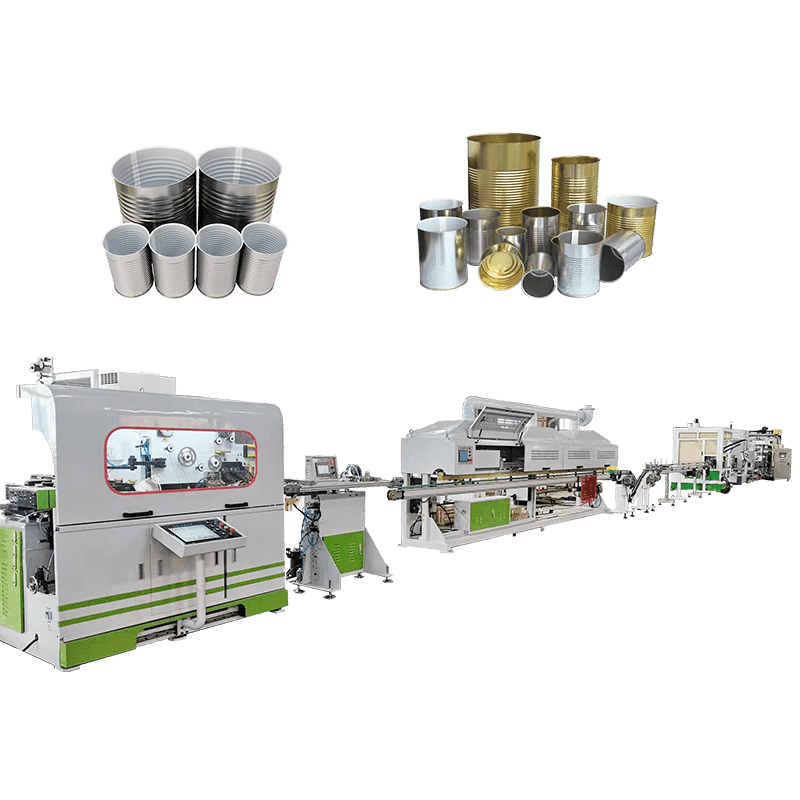Aerosol Tin Can is one of the widely used packaging products in daily life, and is applied in the fields of sprays, cleaning products, personal care, chemical products, etc. Aerosol cans consist of three parts: can body, conical bottom and dome, and the production of these parts depends on highly precise stamping technology. Especially in the production line of conical bottom and dome, the stamping process determines the quality, shape and performance of the product. The following will introduce in detail the key technologies involved in the stamping process of Aerosol Tin Can Cone & Dome Production Line, and explore how these technologies ensure the accuracy and efficiency of the product.
1. Die design and manufacturing technology
The die is a crucial part of the stamping process because it determines the molding quality of the conical bottom and dome of the aerosol can. Die design and manufacturing technology is one of the most core links in production, affecting the shape, size and appearance of the finished product.
Precision die design: The modern Aerosol Tin Can Cone & Dome Production Line relies on high-precision dies, which need to maintain absolute accuracy in multiple stages such as stretching, blanking and trimming. Mold designers need to customize the design according to the specific requirements of the product to ensure that the metal deformation is uniform and the thickness distribution is reasonable during the stretching process, so as to ensure the strength and sealing of the conical bottom and dome.
Mold manufacturing technology: In order to ensure the long-term and efficient operation of the mold, the mold material usually adopts high-strength alloy steel, and undergoes heat treatment process to improve hardness and wear resistance. In the mold manufacturing process, it is necessary to use CNC machine tools (CNC) and electric spark machining technology (EDM) to achieve micron-level precision to ensure that the shape of the mold is exactly the same as the design drawing. Advanced mold manufacturing technology can effectively improve the service life of the mold and reduce maintenance costs in production.
2. High-speed stamping technology
In the Aerosol Tin Can Cone & Dome Production Line, the production of conical bottoms and domes requires a large number of stamping operations. In order to improve production efficiency and output, high-speed stamping technology has been widely used.
Servo stamping machine: The servo stamping machine is one of the main equipment currently used in this production line. Unlike traditional mechanical stamping machines, the servo stamping machine can accurately control the stamping speed, pressure and stroke to ensure that the force applied to the metal during the stretching and forming process remains uniform. This precise control can not only improve product consistency, but also reduce material waste and mold wear, and extend the service life of the equipment.
High-speed feeding system: An efficient production line requires fast and accurate material delivery. The high-speed feeding system uses an automated manipulator or conveyor belt to quickly and accurately feed the metal sheet into the die of the stamping machine. This system improves production efficiency and ensures the accuracy of each feeding, reducing material waste and operating errors.
3. Metal stretching and forming technology
Metal stretching technology is one of the core technologies for the production of conical bottoms and domes. During the stamping process, the metal sheet needs to be gradually stretched into a specific shape and thickness. This process requires the material to have good ductility and advanced forming technology to control the deformation of the material.
Multi-stage stretching process: In the process of producing aerosol cans, the shape of the conical bottom and dome is relatively complex, so a single stretching cannot be completed, and a multi-stage stretching process is required to gradually form the desired shape. By applying pressure in stages, the metal sheet is slightly stretched at each step to gradually form the final shape. Multi-stage stretching can reduce the risk of material breakage while improving the quality and consistency of the finished product.
Pressure control technology: During the stretching process, the applied pressure needs to be precisely controlled. If the pressure is too high, it may cause the metal material to crack or deform unevenly; if the pressure is too low, the expected forming cannot be completed. Therefore, precise pressure control technology is used on the production line. Sensors are used to monitor and adjust the force of the punching machine in real time to ensure that the pressure on the metal sheet during the forming process is always within the optimal range.

 English
English عربى
عربى русский
русский




